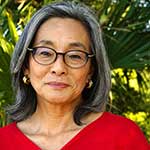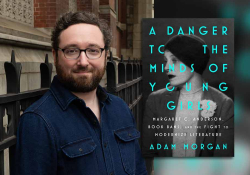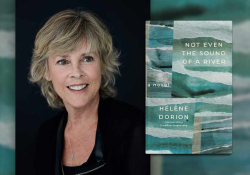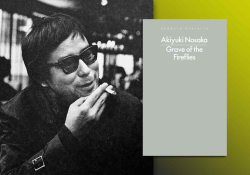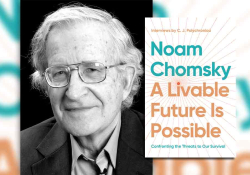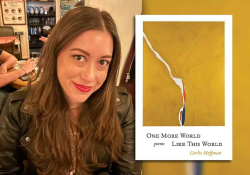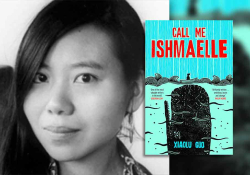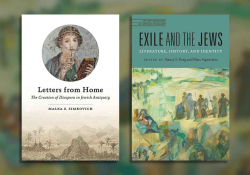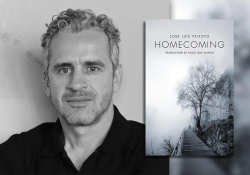Poetry as a Way of Life: Conversations with Lenard D. Moore
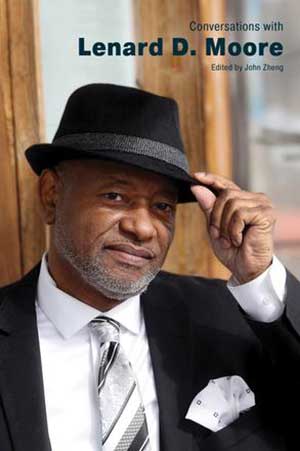 Edited by John Zheng, Conversations with Lenard D. Moore (University Press of Mississippi, 2024) collects sixteen interviews conducted over three decades by Lenard D. Moore’s (b. 1958) peers and collaborators. The book is resourceful, as each interviewer sheds a different light on the writer’s thoughts, craft, accomplishments, and life. Some questions bring out more of the poet, who prefers his work to speak for itself than the poet explaining his intentions.
Edited by John Zheng, Conversations with Lenard D. Moore (University Press of Mississippi, 2024) collects sixteen interviews conducted over three decades by Lenard D. Moore’s (b. 1958) peers and collaborators. The book is resourceful, as each interviewer sheds a different light on the writer’s thoughts, craft, accomplishments, and life. Some questions bring out more of the poet, who prefers his work to speak for itself than the poet explaining his intentions.
Crystal Simone Smith, in her “Mentoring a New Generation of African American Haiku Writers: Interview with Lenard D. Moore” (2020), introduces the poet:
As one of the leading haiku poets in the United States, [Moore’s] individual accomplishments include five poetry collections, an extensive list of major awards, including three Haiku Museum of Tokyo Awards, and being the first African American elected as president of the Haiku Society of America. In addition, [he has] collaborated often through the years with fellow writers, partnering in projects and publishing anthologies.
In her interview, Smith asks Moore to discuss some of his favorite haiku and provide some background to the poems.
another gospel song
streams on the laptop —
the deepening night
He explains that some days, he listens to gospel and sings along with it in the morning and at night. He also loves jazz:
quiet rain
a Coltrane tune I know
on the radio
As he responds to the interviewer’s request, he begins to explain his lines:
The quietness of the rain contrasts with the sound of “Coltrane tune” in the poem. It slowly builds from quietness to a pleasing sound or enjoyable experience.
Throughout the book, Moore often answers a question with “It is my way of life.” In the earliest interview (1995), Jane Reichhold asks: “Why do you continue to write haiku, tanka, and renga (linked poem) when you are so adept in prose and other poetry?” He replies, “because it is a way of life, which is a part of me just as I have become a part of it.”
In a recent interview by Susan Antolin (2022), he is more emphatic:
Poetry is a way of life. I am poetry. Poetry is me. When I lost my daughter, I turned to poetry. I knew the poetry was a way out of grief. I think poetry should be required reading in all schools. I also think there should be poetry posters in doctors’ offices, dentists’ offices, real estate offices, hair salons, barbershops and museums. Maybe it would make a difference in the global community. I am trying to make a difference in the world.
“Poetry is a way of life. I am poetry. Poetry is me.”—Lenard D. Moore
The index at the back of the book is organized by the names of writers who appear more than once in the book. Under Moore’s entry, thirty-nine keywords are listed. Most are related to poetry’s craft/genre, such as haiku, diction, haibun, form, etc. Others are broad but important concepts close to the writer’s heart, such as church, identity, spirituality, and music. African American or Black-specific topics also dominate: African American aesthetics, African American culture, African American experience, Afrofuturism, Black dialect / vernacular poetry, Black haiku, Black literary renaissance, and Carolina African American Writers’ Collective. Moore is excited and proud of the collective he founded in 1995.
Moore is known for his poetry inspired by music. He calls them blues haiku, gospelku, hip-hop, jazzku/jazz haiku, or jazz poems. The interviews “Lenard D. Moore on the Music of Poetry,” by Ann Angel (2022); “Jazz Poetry as a Message of African American Culture,” with John Zheng (2023); and “Between Grief and the Gospel: The Poetry of Lenard D. Moore,” with Ce Rosenow (2023) are particularly rich interviews on the topic of Moore’s passion for music.
Moore is known for his poetry inspired by music: blues haiku, gospelku, hip-hop, jazzku/jazz haiku, or jazz poems.
Moore often mentions Gwendolyn Brooks, Langston Hughes, Sonia Sanchez, and Richard Wright as influences. His strong memory recalls how he encountered each poet or their work and how they influenced him. The frequent mention of Gerald W. Barrax (always preceded by the title professor) as his teacher, Kalamu ya Salaam, and Eugene B. Redmond show Moore’s loyalty and indicate a long-lasting, tightly knit writers’ community throughout his writing life.
The book is filled with interesting details. For one, Moore revealed a behind-the-scenes process for the chapbook Gathering at the Crossroads (2003). Answering John Zheng, Moore explains that his haiku are not ekphrastic based on Eugene B. Redmond’s photographs, but he wrote the haiku and then asked Redmond to send some of his photographs of the Million Man March for the project. The publisher, Red Moon Press, selected the photographs from Redmond’s photographs and then paired the poems and photography.
Another name illuminated is Maiisha Moore, his daughter. She appears more than the index indicates as she is lovingly and simply called his daughter. The poetic form is a key concept for the poet, and the following is one of the most moving passages ever written about poetic forms:
There are times when a poetic form, which I employ, chooses me. And there are times when I choose the poetic form with which I write. When I lost my daughter, I went to the library daily to write about her, I gave myself a challenge. I wanted to write poetry about her, employing several different poetic forms. I had to teach myself to write in some of those poetic forms. Some of the poetic forms were difficult. I kept working with them. I think I employed more than twenty-five different poetic forms to write poetry about my daughter.
Conversations with Lenard D. Moore is a rewarding read and a useful resource for understanding the width and depth that lie beneath the poet’s literary essence crystalized in small poems.
Hilton Head Island, South Carolina
